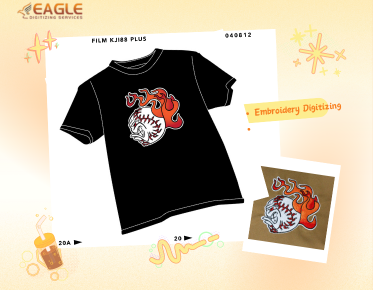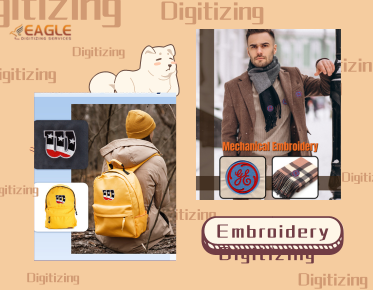Debunking the Myth: Vector Art is Always Simple and Cartoonish
Vector art is an unsung hero of the design world. While widely recognized for its clean, scalable qualities, it’s often unfairly pigeonholed as simple or cartoonish. This misconception, though pervasive, misses the mark on what vector art truly represents.
Why does this myth persist? For some,
it’s rooted in the ubiquity of logos and icons, which often embody simplicity.
For others, it’s the way early vector software was marketed. Today, we’ll
dismantle this myth and uncover the vibrant, intricate, and versatile world of
vector art.
What Does “Simple
and Cartoonish” Really Mean?
Many associate vector art with basic
shapes and bold colors. While logos and icons often embrace this aesthetic,
it’s just one facet of what vector art can achieve.
Myth 1: Vector Art is Only for Corporate Logos and Icons
Where This Myth
Began
The misconception that vector art is
limited to corporate logos and icons likely stems from its association with
simplicity and scalability—traits highly valued in branding. Early design
software played a role by providing templates and tools that catered primarily
to logo creation, reinforcing the idea that vector art was primarily functional
rather than versatile.
Beyond Branding
While logos and icons showcase vector
art's precision and scalability, they barely scratch the surface of its
capabilities. Vector art is a powerful medium for a variety of creative
applications:
● Editorial Illustrations: Sharp, clean lines and scalable elements make vector art perfect for
infographics and magazine spreads.
● Digital Paintings: With the right tools, vector-based techniques can mimic the fluidity
and depth of traditional painting styles while maintaining resolution
independence.
● Fine Art: Many artists use vector software to craft intricate, detailed works for
gallery exhibitions.
● Storytelling: From children's book illustrations to animated content, vector art
offers consistency and flexibility.
● Product Design: Vectors are frequently used in fashion design, packaging, and more
due to their ability to adapt seamlessly across formats.
● Large-Scale Installations: Whether it's a mural or a billboard, vector art ensures flawless
scalability without compromising quality.
Vector art is more than just functional;
it's a dynamic medium that thrives in diverse artistic and practical domains.
This myth overlooks its ability to push creative boundaries and drive
innovation across industries.
Myth 2: Vector Art Lacks Emotional Warmth
The “Cold and Mechanical” Argument
A common critique of vector art is that
it feels "cold" or "mechanical," lacking the emotional
resonance and organic imperfection often associated with traditional art forms.
Detractors argue that the precision and clean lines inherent in vector-based
designs make it feel detached or overly sterile, as opposed to the more
tactile, raw quality of brush strokes or pencil sketches.
Overlooking the Power of Expression
This perspective, however, misses the
versatility and emotional depth that skilled artists can bring to vector art.
While vector tools inherently prioritize
precision, it’s the artist’s creativity and technique that breathes life and
warmth into the medium. A well-crafted vector piece can evoke just as much
feeling as a painting or drawing, leveraging deliberate choices in textures,
gradients, and palettes.
Creating Warmth and Depth
Artists can employ various techniques to
ensure their vector art resonates emotionally:
● Textures and Gradients: Subtle gradients and textured overlays can add a sense of depth and
richness, making the artwork feel less flat and more alive.
● Organic Forms: By integrating soft, flowing, or asymmetrical shapes, artists can
mimic the fluidity of natural elements, countering the rigidity often
associated with vectors.
● Hand-Drawn Simulation: Tools that replicate hand-drawn lines, along with brushes or strokes
that vary in thickness and texture, can make vector art feel more personal and
expressive.
● Intentional Color Choices: Warm, inviting color palettes or carefully selected complementary
tones can evoke emotional connections and moods, transforming the perception of
vector art from "mechanical" to heartfelt.
Art is What You Make of It
Ultimately, the medium is just a tool,
and the artist's intent and skill determine the emotional impact of any work.
Vector art, when approached with thoughtfulness and creativity, can deliver
powerful, evocative, and deeply human experiences.
Myth 3: Vector Art is Always Simplistic
When people think of vector art, they
often imagine clean, flat, and minimal designs—logos, icons, or stylized
illustrations. While vectors are celebrated for their simplicity and
scalability, equating them solely with minimalism ignores the vast creative
possibilities this medium offers. Vector art can be anything but simplistic.
Hyper-Realistic Vector
Illustrations
Photorealistic vector art challenges the
misconception that vectors are inherently basic. Artists use this medium to
create stunningly lifelike portraits, intricate textures, and three-dimensional
renderings that rival traditional art forms. These works are more than just
digital creations—they are technical masterpieces showcasing a deep
understanding of light, texture, and form.
How It’s Done
Achieving photorealism in vector art
isn’t a simple task. It requires:
● Meticulous layering: Artists build complex compositions layer by layer, capturing every
minute detail.
● Precision shading: Smooth gradients, subtle transitions, and delicate shadows bring a
sense of depth and realism to the piece.
● Expert use of gradient meshes: This technique is central to photorealistic vectors, enabling artists
to simulate intricate lighting effects and nuanced details, from skin textures
to reflective surfaces.
These methods push vector art beyond the
confines of simplicity, transforming it into a medium of fine craftsmanship.
Organic and Personalized Approaches
Beyond photorealism, vector art can also
emulate the warmth and uniqueness of traditional mediums. Techniques like:
● Overlaying organic forms: Adding irregular shapes and curves that mimic natural elements.
● Simulating hand-drawn lines: Creating imperfect strokes that capture the spontaneity of
traditional art.
These approaches infuse vector designs
with personality, passion, and an unmistakable human touch.
Breaking the Mold
Far from being restrictive, vector art is
an expansive medium that rewards creativity and innovation. Whether through
hyper-realistic techniques or organic, hand-crafted aesthetics, vector artists continue to push boundaries and defy
expectations. The next time someone says vector art is "simplistic,"
point them to the works of artists who turn anchor points and paths into
breathtaking masterpieces.
Myth 4: Vector Art Can’t Capture Realistic Textures
Mimicking Natural Media
While vector art is often associated with
clean lines and flat colors, modern vector tools have evolved to the point
where they can closely replicate the look of traditional media. Advanced
features like gradients, transparency, and mesh tools allow artists to create
convincing textures that resemble watercolor washes, oil paint strokes, or even
intricate pencil shading. For example, techniques such as layering and the use
of gradient meshes can simulate the depth and variation seen in natural media,
providing a richness that was once thought exclusive to raster-based art.
Tips for Creating Textures
Creating realistic textures in vector art
requires a combination of skill and the right tools. Blending modes, for
instance, can help seamlessly integrate textures into your artwork, adding
depth and dimension. Additionally, custom brushes—designed to mimic specific
effects like ink splatters or bristle strokes—are invaluable for achieving a
natural look. By experimenting with these tools, artists can push the boundaries
of what’s possible in vector art, merging the precision of vectors with the
organic appeal of traditional textures.
The Versatility of Vector Art in Modern Design
Beyond Cartoonish Aesthetics
Vector art has transcended its roots in
cartoonish illustrations and logos to become a cornerstone of various creative
industries. Whether it’s in high-end fashion prints, detailed architectural
renderings, or sophisticated editorial layouts, vector art’s clean, scalable
nature makes it a favorite for applications that demand precision and
flexibility. This evolution highlights its ability to defy traditional
categorizations and cater to diverse artistic needs.
Multi-Platform Applications
One of vector art’s greatest strengths lies in its adaptability. Unlike raster images, vectors maintain their quality regardless of scaling, making them perfect for projects that span multiple platforms. From web graphics to billboard advertisements and high-resolution prints, vector files ensure consistency and clarity across formats. This versatility not only enhances efficiency for designers but also guarantees that their work looks flawless, whether viewed on a smartphone screen or a massive outdoor display.
Common Missteps When Judging Vector Art
Misjudging Complexity
Casual viewers often mistake vector art’s
clean lines and sharp edges for simplicity. However, behind these polished
visuals lies an intricate process that demands technical skill, precision, and
creative vision. From constructing complex paths to layering elements for depth
and dimension, creating vector art is anything but simplistic. This misjudgment
often leads to an undervaluation of the artist's effort and talent.
Evaluating Art Fairly
Art should be assessed based on its
emotional impact, creative execution, and technical prowess—not merely the
medium used to create it. Vector art, like any other form of art, requires
mastery and innovation. A well-crafted vector piece can evoke the same level of
awe and emotional resonance as traditional paintings or sculptures, provided it
is evaluated without bias toward the tools or techniques.
Embracing the Depth
of Vector Art
Vector art is a powerful and versatile
medium that transcends its unfair reputation. From hyper-realistic portraits to
intricate and abstract designs, it offers endless possibilities for creative
expression. Despite its digital nature, vector art can be deeply emotional,
visually striking, and highly impactful. It’s time to break free from outdated
perceptions and embrace the true artistry and depth that vector creations offer.



